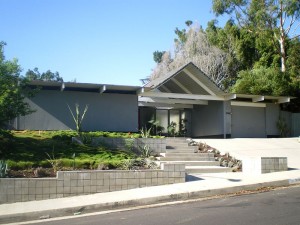I recently presented at a conference at USC titled Art + the Mind: Neuroaesthetics, Phenomenology, and the Experience of Vision. I talked about the berserk vision of the Lewis Chessmen, and my co-presenters (four other grad students) covered subjects ranging from the historical conditions of viewing and its consequences in the 19th century museum, to Piranesi and occularcentrism, cinema and the intersubjectivity of attention, and spectatorship in Olafur Eliasson’s experiential installations.
The experience was a lot of fun (thanks for having me Karen, Megan, and Sam) and introduced me to a whole body of writing on neuroscience, visual culture, and experience that I hadn’t come across at the Graduate Center. Neuroscientist António Damásio (the director of the Brain and Creativity Institute at USC) and David Freedberg (Pierre Matisse Professor of Art History at Columbia) gave keynote addresses on the agency of art and their action on our neural pathways. Looking at an artwork causes our neurons to fire, triggering a physical, non-cognitive (or at least pre-cognitive) “mirror response,” what they termed an embodied reaction to artworks. Even if we don’t raise our hands in silent pledge when we see the Horatii raise theirs in Davids’s Oath, recent neuroscience experiments tell us that neurons fire in the region of the brain responsible for contracting the muscles in our arm and lifting our limb.

Antonio Damasio and his wife Hanna (also a neuroscientist and his academic partner) with their MRI scanner at USC.
Damasio and Freedberg termed this magical thinking the “as if” response – we respond to the artwork, even if only in our minds and not bodily, as if we were there undertaking the action. This implied collapsing of the distance between the artwork and our body is nothing new in light of artistic practice from the 1960s onwards (or even the andachtsbilder of the Northern Gothic) but using the conceptual framework of neuroaesthetics to tease it apart, to highlight what we intuitively understand as people invested in the arts (my brain does fire neurons when I see a work that moves me) was fascinating. It made me think of the artist-educators of the early 70s that I’ve been researching, and the ways in which they encouraged participants in their programs to abandon the primacy of cognitive responses (letting go of the immediate need for history, context, a wall label) to revel in shape, feeling, identification, embodiment in front of an artwork. Educator Philip Yenawine’s “zero-information” strategy at the Met Museum infuriated curators at the time (his methods had children moving around on the gallery floor “embodying” color and shape) yet finds new legitimacy in light of the marriage between neuroscience and art.
As Dr. Damasio spoke, I thought a lot about what kind of art I responded to in this foundational way, not least because I’ve come to the crossroads where I have to choose my independent study, the self-designed course of study that will prepare me for my oral exams and act as a springboard for my dissertation. It’s another moment unique to the American PhD system. If I’d stayed in Europe I’d have approached doctoral study with a clearly defined topic approved before I’d even matriculated. Instead, I’ve spent three years in classes that have broadened my studies (sparking a latent passion for medieval history – hence my presentation at the conference on a subject well outside my dissertation topic) and made it even harder to whittle down one area of specialization. It’s the question that has pressed insistently over the last year in particular: what really moved me enough (and was under-researched enough to constitute an original path of inquiry) to spend two or three years with it.
I had some great advice given to me by an older and wiser professor friend just as I went back to school – “pick a subject in your first year, write around it any way you can while in classes, and then you have half the work done by the time you come to propose and write the dissertation.” His words have echoed with each abstract I’ve prepared over the last few years, but what he didn’t prepare me for was having to choose at a fork in the road between two passions that have developed simultaneously: museum education and its parallels and convergences with contemporary art, and social histories of architecture and the focus on individual lived experience in high-density housing projects. In my first year at the Graduate Center I wrote two papers that I loved researching. One was on the work of West Coast builder and developer Joseph Eichler and I became fascinated by the way his suburban tract developments, built between 1947 and 1966, became the Californian counterpart to William Levitt’s Levittown (only slightly more upscale, with the addition of a “spare” bathroom making them solidly middle class homes). I also worked on a paper on radical museum education practice of the early 1970s and its recent appropriation by the generation of social practice artists such as Tino Sehgal. And now I’m stuck with one foot in each camp, equally brilliant professors and advisors to work with, and a choice I need to make (quickly) in order to get my independent study approved and lined up for the fall semester. I need some magical thinking of my own…..
Next month – a report back on the pedagogy workshops and website I wrote about in February.







